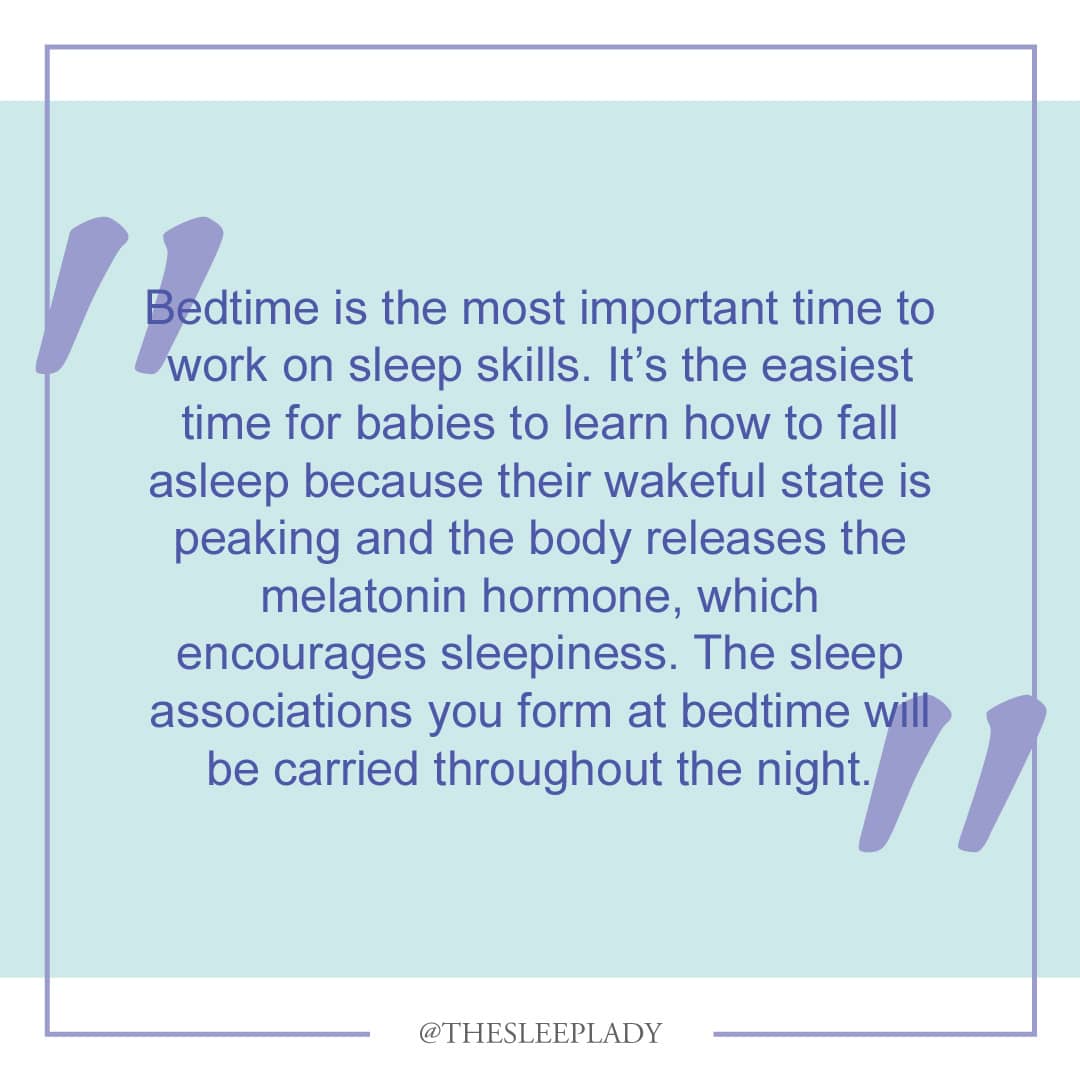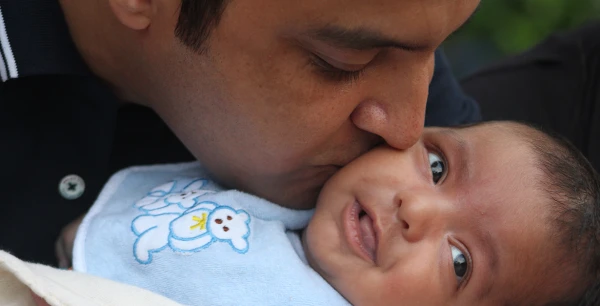As parents, we all want our babies to feel safe and secure so they can go to sleep peacefully at bedtime. But how do we make that happen so they can sleep through the night without suffering through bouts of heartrending crying? It would be great if there was one definitive, easy answer for us, but the reality is that self-soothing to sleep is a learned skill. For some babies it comes easily. For others it is a lot of work. There is no one-size-fits-all answer, but often the question I get from parents when it comes to sleep training babies is, “Is it really all or nothing?”
Trade Your Tears for Time
There will be work involved in training your baby to self-soothe. But they don’t have to cry it out all night long. If you are like me, tears make my ears ring. I get lightheaded and feel pain when my baby cries. If the only answer was tears at bedtime and all night long, then I would go for the door that says “nothing.” I would rather be sleep deprived myself than have my baby cry all night long, and I work with many parents who have been doing just that. Thankfully, I can tell you with great confidence, evidence, and coaching experience that it doesn’t have to be “all or nothing!” There are sleep coaching methods that allow you to go at your pace, support your parental intuition, and address your baby’s needs, while keeping tears to a minimum.
 I have found that when I am making the best parenting decisions for my children it has been in the moments that require me to listen to them. Then I can assess their need, and intentionally respond. This is also true when training your baby to sleep. I have co-authored a book with Andrea Strang titled “Loved to Sleep.” The Loved to Sleep Method is a nurturing strategy where you invest your time to reduce the amount of crying and improve sleep. Essentially, you are trading tears for time. This method is designed to give you the tools to decide what is right for your family. Not every family has the same expectations or wants the same end result with regard to how and where their baby sleeps.
I have found that when I am making the best parenting decisions for my children it has been in the moments that require me to listen to them. Then I can assess their need, and intentionally respond. This is also true when training your baby to sleep. I have co-authored a book with Andrea Strang titled “Loved to Sleep.” The Loved to Sleep Method is a nurturing strategy where you invest your time to reduce the amount of crying and improve sleep. Essentially, you are trading tears for time. This method is designed to give you the tools to decide what is right for your family. Not every family has the same expectations or wants the same end result with regard to how and where their baby sleeps.
Bedtime is the Right Time for Sleep Training Babies
Here’s the good news: According to Jodi Mindell, associate director of the Sleep Disorders Center at The Children’s Hospital of Philadelphia, “The self-soothing skills (falling asleep easily and quickly) that the child develops at bedtime are highly likely to lead to self-soothing during the night within two weeks.”¹ I have seen this happen with my clients repeatedly. Parents teach their little one to self-soothe at bedtime only, and they respond to the child as usual with soothing during night wakings. Over time, the little one will begin to stretch the amount of time between night awakenings and start to self-soothe during those times of wakefulness. The parents are no longer nursing, rocking, or holding the baby to sleep overnight. How encouraging is that?
There are different sleep coaching or sleep training options to choose from. Kim West’s method, The Shuffle, is especially good for babies who are 6 months or older and who will be sleeping in a crib. I have used the The Shuffle method at bedtime with many of my clients and over time, their little ones begin to sleep through the night on their own. If you are a co-sleeping family, have been nursing on demand at night, and want to transition to a separate sleep surface, or want to bed share without associating nursing at all night awakenings, then the Loved to Sleep Method would be a good choice. You can use the Loved to Sleep Method in combination with The Shuffle or other methods. Again, there is no “one way” to teach your baby to self-soothe. You’ll have to find the right fit for your family. Once you have made the decision of what method to use, then the best way to start is with bedtime.
¹ Pg. 89, “A Clinical Guide to Pediatric Sleep” by Jodi A. Mindell and Judith A. Owens
If you are interested in what it might look like to start with the Loved to Sleep Method, below are two excerpts from the book “Loved to Sleep” where we talk about how to get started and why bedtime is the best place to begin sleep coaching. “Loved to Sleep” is now available in Kindle format on Amazon. Click here to buy it.

Excerpt from “Loved to Sleep” – Introduction
Determine your long-term sleep goal:
Things to consider:
- Where do you want the baby to sleep?
- How do you want to put your baby to sleep?
- What is your night feeding plan?
- How much sleep does your baby need?
Start with what works:
If you are nursing/feeding, rocking, walking, or comforting your baby to sleep, this is your Base Technique. Your Base Technique is your starting place, and it is with this technique that you will gently nudge your baby into better sleep habits.
Begin at bedtime:
You don’t need to continue through the night for now, as bedtime is the key time for learning sleep skills. You can do whatever works to get your family the best sleep for the remainder of the night in the short term. You want to protect your baby’s sleep in the day so it is OK and helpful to assist with naps. Just getting enough sleep in a 24-hour period of time will help reduce fussiness at bedtime and can decrease the number of night awakenings.
Take a baby step:
Next you make a small Sleep Shift, which is one small step you can take toward your goal. This Shift is a gentle nudge in the direction towards your sleep goal, not a shove.
Example: If your baby usually feeds to sleep, try to feed your baby until drowsy and then rock them to sleep.
Keep perspective – remember, you are not asking your baby to do this all by themselves. You are asking them to do some of the work with you. Keep your focus positive. You might say to your child or to yourself, “Little one, I am here with you, and we can do this together.”
Short-term goal:
Within the next few days help your baby fall asleep while implementing a new association with sleep. Make one small step towards that next Sleep Shift.
Excerpt from “Loved to Sleep” – Chapter 5
Start at Bedtime
Bedtime is the most important time to work on sleep skills. Here’s why:
- It is the easiest time for your baby to learn to fall asleep. Compared with the middle of the night, your baby has the advantage of being at the end of a wakeful state in which they have been observing and learning all day.
- There is significant pressure to sleep at bedtime. Sleep pressure is working in your favor at the end of the day. The body’s wakeful system is peaking and the hormone melatonin is released as the lights dim, increasing sleepiness. In addition, other bodily forces, such as felt sleep pressure and the circadian rhythm, are gearing up for sleep.
- It is the time when you set the expectation of how your baby is to fall asleep and stay asleep. Sleep associations at bedtime have a significant impact on expectations and needs through the night. For example, by rocking your baby to sleep, you essentially tell your baby that it is your job to do the rocking to get them to sleep. So in the middle of the night when your baby rouses, your baby fully expects you to come back and do your job of rocking them back to sleep. Because they did not learn the skill at bedtime, they have no ability to fall asleep without it through the night.
Keep in mind whatever support you offer your baby at bedtime, they will expect the same support or more in the middle of the night.
Starting at bedtime is essential because bedtime is very significant. In fact, it is so significant that if you choose to do your sleep coaching only at bedtime, you have a good chance that your night awakenings will improve on their own.
You can purchase the entire book, Loved to Sleep, by Jen Varela and Andrea Strang here.
Wishing you many nights of sweet sleep!




